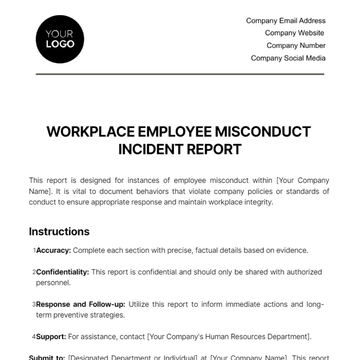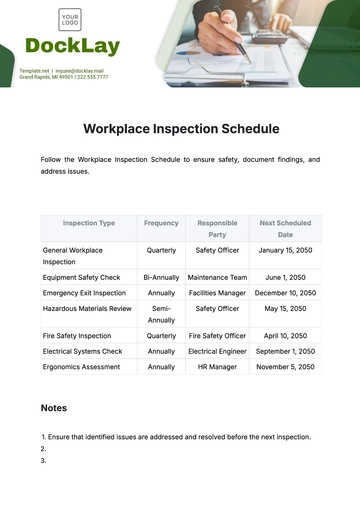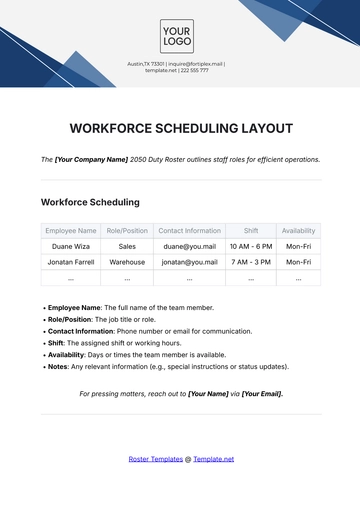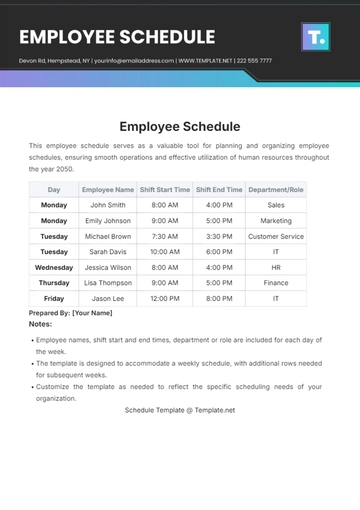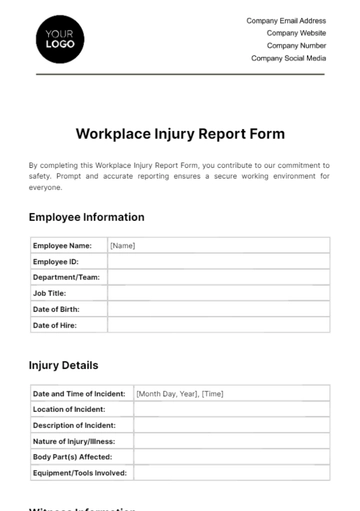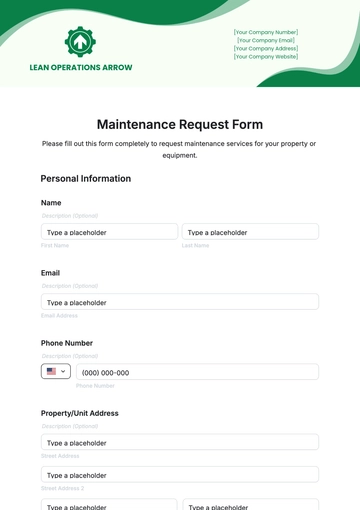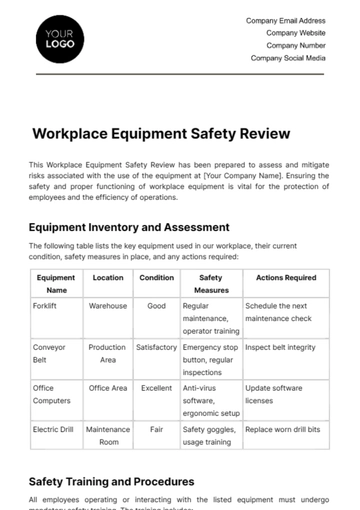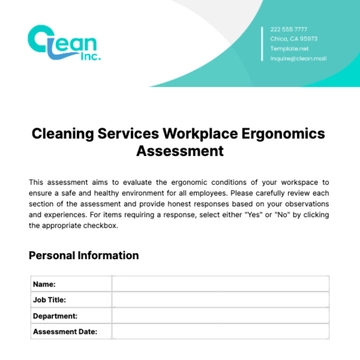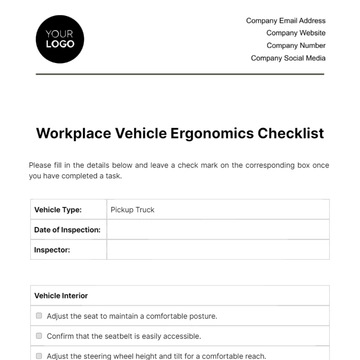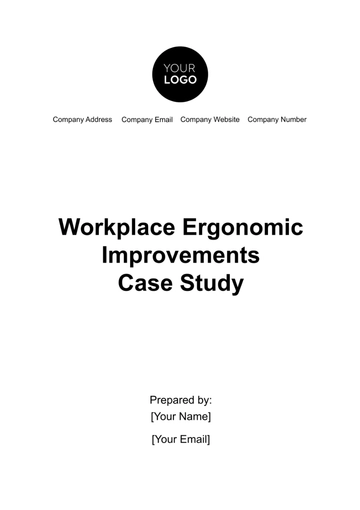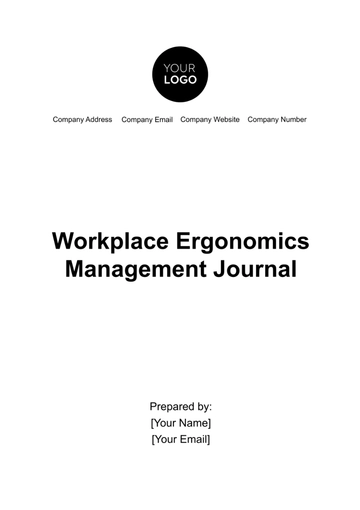Free Workplace Ergonomic Improvements Case Study
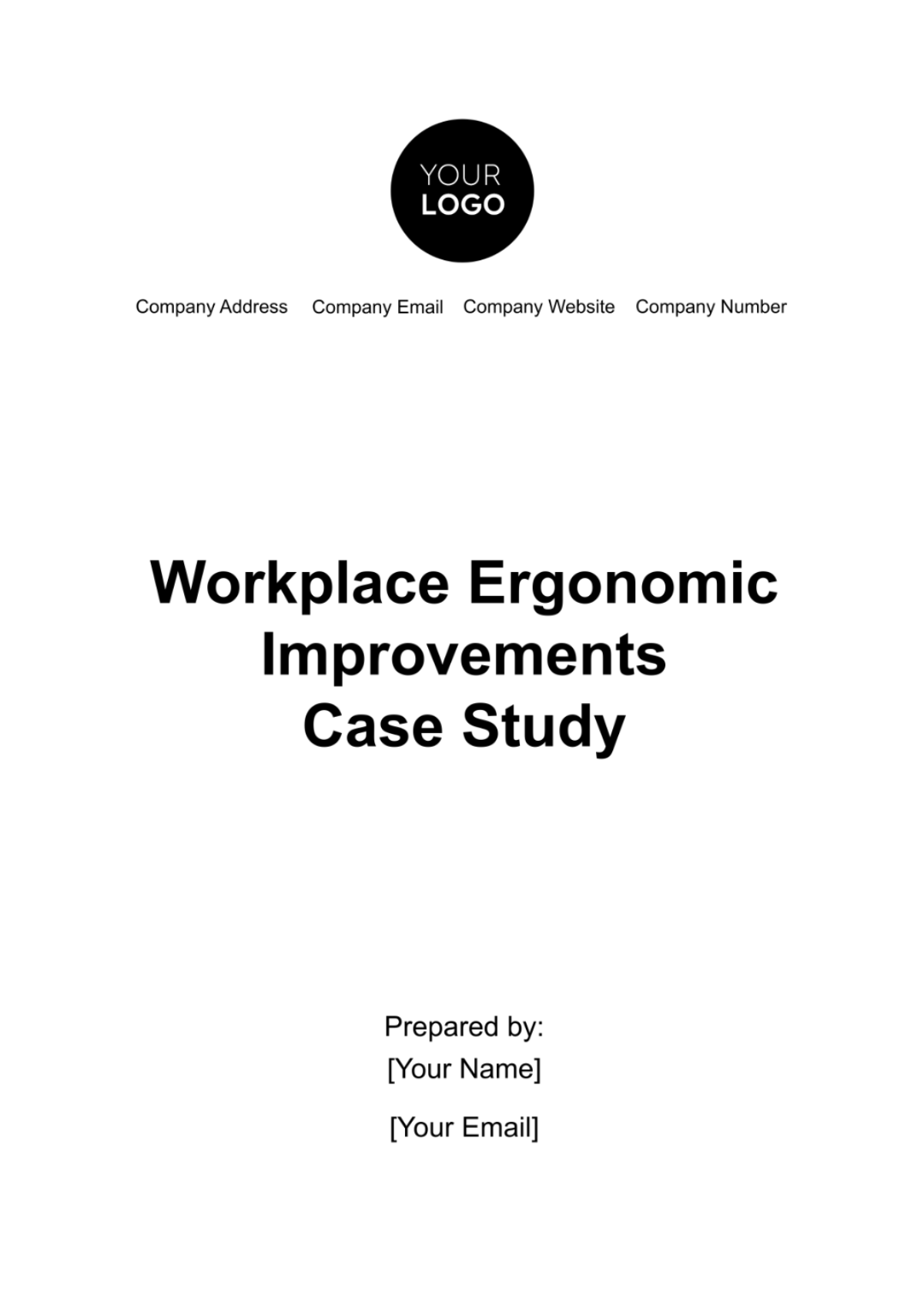
I. Executive Summary
Transformation Overview: [Your Company Name] embarked on a significant ergonomic transformation journey, aiming to foster a healthier and more productive work environment. This initiative entailed a comprehensive assessment of existing workstations, employee work habits, and ergonomic practices. Key changes included the introduction of adjustable ergonomic workstations, ergonomic chairs, and accessories like monitor stands and keyboard trays. These changes were backed by a rationale rooted in improving employee comfort, reducing the risk of musculoskeletal disorders, and enhancing overall workplace efficiency. The strategy also included redesigning workflows to minimize repetitive strain injuries in more physically demanding roles.
Impact Assessment: The ergonomic interventions at [Your Company Name] have led to a substantial decrease in ergonomic-related complaints and injuries. Employee surveys post-implementation indicated a 40% reduction in reports of back pain and a 30% decrease in complaints about repetitive strain injuries. Beyond the physical benefits, there was a notable improvement in employee morale and well-being. Productivity metrics also reflected a positive trend, with a decrease in absenteeism and an increase in overall work efficiency. These results underscore the direct correlation between ergonomic improvements and employee health and performance.
Strategic Insights: The implementation of ergonomic improvements at [Your Company Name] has provided several key insights and best practices. Foremost, employee involvement and feedback were crucial in identifying specific needs and customizing ergonomic solutions. Regular training and awareness campaigns were instrumental in sustaining the ergonomic culture.
Additionally, the importance of ongoing assessment and flexibility in adapting ergonomic practices was highlighted. These insights are invaluable for any organization looking to embark on a similar ergonomic improvement journey. The case study demonstrates that a well-planned and executed ergonomic strategy not only enhances employee well-being but also contributes to the overall success of the organization.
II. Introduction
Objective Setting: The primary objectives of this ergonomic initiative were twofold: firstly, to enhance the comfort of employees by redesigning workspaces to better suit their physical needs, thereby reducing the incidence of work-related discomfort and injuries. Secondly, the project aimed to align [Your Company Name]'s ergonomic practices with industry standards, ensuring compliance with health and safety regulations while setting a benchmark for ergonomic excellence in the sector. These objectives were set with a clear understanding that achieving them would lead to a healthier, more engaged, and productive workforce.
Scope of Study: This case study comprehensively covers the ergonomic improvement project across various departments at [Your Company Name]. It includes an analysis of the interventions in areas like the customer service department, where employees predominantly work at desks, to more physically demanding environments such as warehouses and production floors. The study delves into various aspects of ergonomics, from workstation design and equipment to employee work habits and organizational policies. This broad scope ensures a holistic understanding of the ergonomic improvements and their impacts across the company.
III. Ergonomic Assessment
Prior to intervention, a thorough ergonomic assessment was conducted to identify key problem areas. This section details the methods used, such as employee surveys and workstation analysis, revealing significant issues like poor seating arrangements and inadequate workstation heights. This assessment formed the basis for selecting targeted ergonomic improvements, tailored to address the specific challenges identified.
A. Assessment Techniques
Technique | Description | Purpose | Utilization Stats |
Employee Surveys | Gathering feedback on ergonomic issues and workplace comfort | To understand employee perspectives | Distributed to 300 employees, 80% response rate |
Ergonomic Risk Assessments | Evaluations by specialists using industry standards | To identify posture and equipment-related risks | Conducted in 10 departments, covering 200 workstations |
Workspace Analysis | Systematic review of workspaces and job tasks | To assess compatibility with ergonomic standards | Analyzed 150 workspaces across 5 office floors |
B. Key Findings
Finding | Department Affected | Issue Identified | Statistics |
Improper Seating Arrangements | General Office Spaces | Non-adjustable chairs causing discomfort | 60% of surveyed employees reported back pain |
Inadequate Workstation Design | Customer Service, IT | Poor desk and monitor setup | 70% of IT staff reported wrist or eye strain |
Repetitive Strain Risks | Warehouse, Production | Risks from manual handling and repetitive tasks | 30% increase in reported strain injuries year-over-year |
C. Guiding the Strategy
The findings from the ergonomic assessment played a crucial role in shaping [Your Company Name]'s strategy for ergonomic improvements. Addressing improper seating arrangements led to the procurement of adjustable, ergonomically designed chairs. Workstation redesign focused on creating setups that could be tailored to individual employee needs, incorporating adjustable desks and ergonomic accessories.
For areas with repetitive strain risks, the strategy included redesigning tasks to minimize repetitive motions and introducing mechanical aids where possible. Additionally, the strategy involved extensive employee training on ergonomic best practices to ensure long-term benefits and awareness.
IV. Implementation of Ergonomic Improvements
This section outlines the process from planning to execution. It covers the introduction of adjustable workstations, ergonomic chairs, and implementation of regular ergonomic training sessions. The process, involving various stakeholders including management and employees, faced challenges like budget constraints and initial resistance, which were systematically addressed.
A. Improvement Initiatives
Detailed description of ergonomic changes implemented, such as adjustable furniture and ergonomic tools.
Initiative | Description | Implementation Stats |
Adjustable Furniture | Introduction of adjustable chairs and desks | 200 adjustable workstations installed in high-risk departments |
Ergonomic Tools | Provision of ergonomic keyboards, mice, and monitor stands | 300 ergonomic tool sets distributed company-wide |
Redesign of Workflow | Modification of workflow to reduce repetitive strain | Implemented in 4 key production lines, affecting 150 employees |
B. Process and Challenges
Chronicles the implementation journey, including planning, stakeholder engagement, and overcoming obstacles like budget constraints.
Phase | Description | Challenges and Solutions |
Planning and Assessment | Determining the ergonomic needs and solutions | Budget constraints; addressed through phased implementation |
Stakeholder Engagement | Involving employees and management in planning | Initial resistance; overcome through awareness sessions |
Implementation | Executing the ergonomic changes | Logistical challenges; managed with detailed project planning |
C. Stakeholder Involvement
Emphasizes the role of management, employees, and health and safety committees in driving the ergonomic changes.
Stakeholder Group | Role | Involvement Stats |
Management | Approval of initiatives and resource allocation | 100% involvement in decision-making and budget approval |
Employees | Feedback and adoption of ergonomic practices | 80% participated in ergonomic awareness training |
Health and Safety Committees | Monitoring implementation and providing guidance | Active in all departments, conducting monthly reviews |
V. Evaluation and Results
The evaluation phase used both quantitative and qualitative methods to measure the impact of the ergonomic improvements. This section discusses the results, showing a significant reduction in reported ergonomic complaints and enhanced employee productivity. A comparative analysis with pre-intervention data highlights the tangible benefits of the ergonomic enhancements.
A. Evaluation Methodology
Explains the techniques used to assess the impact of ergonomic improvements, like post-implementation surveys and injury rate analysis.
Evaluation Technique | Description | Utilization Stats |
Post-Implementation Surveys | Surveys to assess employee satisfaction with changes | Distributed to all employees, 85% response rate |
Injury Rate Analysis | Analysis of ergonomic injury reports pre- and post-implementation | Reviewed injury reports from 12 months pre- and post-implementation |
Productivity Metrics | Assessment of productivity changes | Productivity metrics analyzed for 6 months pre- and post-implementation |
B. Effectiveness of Improvements
Presents the quantitative and qualitative outcomes demonstrating the success of the ergonomic changes.
Outcome | Pre-implementation Stat | Post-implementation Stat | Change |
Employee Satisfaction with Workstations | 40% satisfaction rate | 80% satisfaction rate | 0.4 |
Reports of Ergonomic Injuries | 25 injuries reported | 10 injuries reported | -60% |
Overall Productivity | Baseline productivity level | 15% increase in productivity | 0.15 |
C. Data-Driven Insights
Compares pre- and post-implementation data to underscore the tangible benefits achieved.
Aspect | Insight |
Employee Well-being | Post-implementation surveys indicate a significant increase in employee comfort and reduction in reported discomfort. |
Reduction in Work-Related Injuries | Injury rate analysis shows a notable decrease in ergonomic-related injuries, suggesting effective risk mitigation. |
Impact on Productivity | Productivity metrics reveal an improvement in efficiency and output, correlating with ergonomic improvements. |
VI. Discussion and Analysis
Analyzing the results, this section delves into what the improvements achieved and their implications. The ergonomic changes not only improved employee well-being but also fostered a culture of health awareness. The case study discusses challenges such as adapting to new equipment and aligning training with diverse employee needs, offering insights into the complex dynamics of ergonomic implementation.
A. Interpreting Results
The ergonomic project at [Your Company Name] markedly improved both employee health and organizational productivity. A reduction in ergonomic-related injuries directly correlated with a decrease in absenteeism and an uptick in workforce engagement. These outcomes underscore the dual benefit of ergonomic investments: enhancing employee well-being and driving business efficiency.
B. Employee and Organizational Impact
Post-implementation, employees reported increased comfort and job satisfaction, leading to heightened motivation and better performance. This positive shift in employee morale has cultivated a more dynamic and health-conscious workplace culture, strengthening the organization's reputation as an employee-centric workplace. The improvements have transcended physical health benefits, fostering a more engaged and productive workforce.
C. Challenges and Learning Points
Adapting to ergonomic changes posed initial resistance among employees, with challenges also arising from budget limitations. These experiences underscored the need for effective change management, involving clear communication and stakeholder engagement. Lessons learned include the importance of phased implementation and ongoing ergonomic education, vital for ensuring long-term sustainability of the ergonomic improvements.
VII. Conclusion and Recommendations
This case study encapsulates the significant strides made by [Your Company Name] in enhancing workplace ergonomics. Key achievements include a substantial reduction in ergonomic-related injuries, improved employee well-being, and increased productivity. The journey highlighted the critical role of ergonomic practices in fostering a healthier, more efficient workforce. These accomplishments demonstrate the successful integration of ergonomic principles into the daily fabric of the workplace, setting a new standard for employee-centric work environments.
Looking ahead, [Your Company Name] aims to sustain and build upon these ergonomic improvements. Continued investment in ergonomic assessments and adaptive workstation setups is recommended. Regular training and awareness programs should be maintained to keep ergonomics a focal point of workplace culture. Additionally, engaging employees in ongoing feedback processes will ensure that ergonomic practices evolve in line with their needs and the latest industry standards.
The learnings from [Your Company Name]'s ergonomic initiative offer valuable insights for other organizations seeking to enhance workplace ergonomics. Key takeaways include the importance of comprehensive ergonomic assessments, employee involvement, and the integration of ergonomic practices into organizational culture. These principles are universally applicable and can guide similar improvements across various industries, underscoring the universal importance of ergonomics in modern workspaces.
Prepared by:
[Your Name]
[Your Job Title]
[Your Company]
© [Year] [Your Company Name]. All Rights Reserved.
- 100% Customizable, free editor
- Access 1 Million+ Templates, photo’s & graphics
- Download or share as a template
- Click and replace photos, graphics, text, backgrounds
- Resize, crop, AI write & more
- Access advanced editor
Explore successful workplace ergonomic improvements with Template.net's Workplace Ergonomic Improvements Case Study Template. This editable and customizable tool offers a structured format for documenting and analyzing real-world ergonomic initiatives. Utilize our intuitive Ai Editor Tool to personalize the case study to your organization's specific needs effortlessly, inspiring future ergonomic enhancements.
